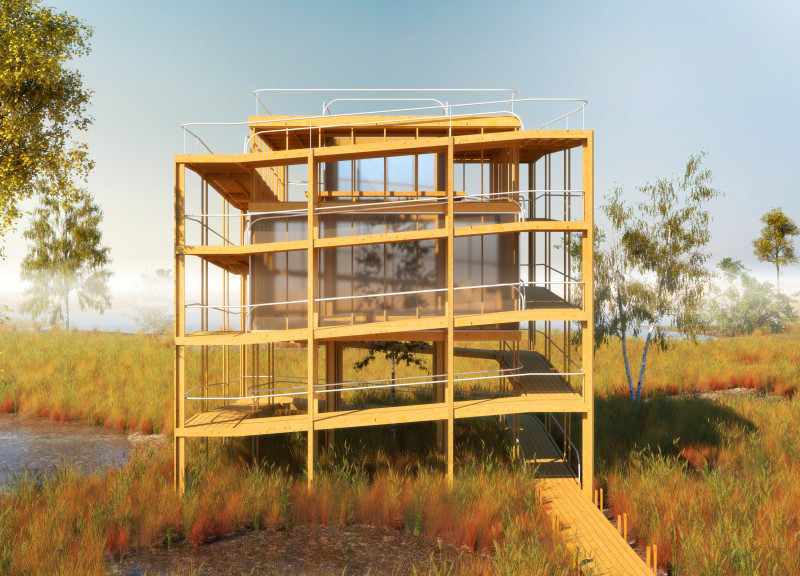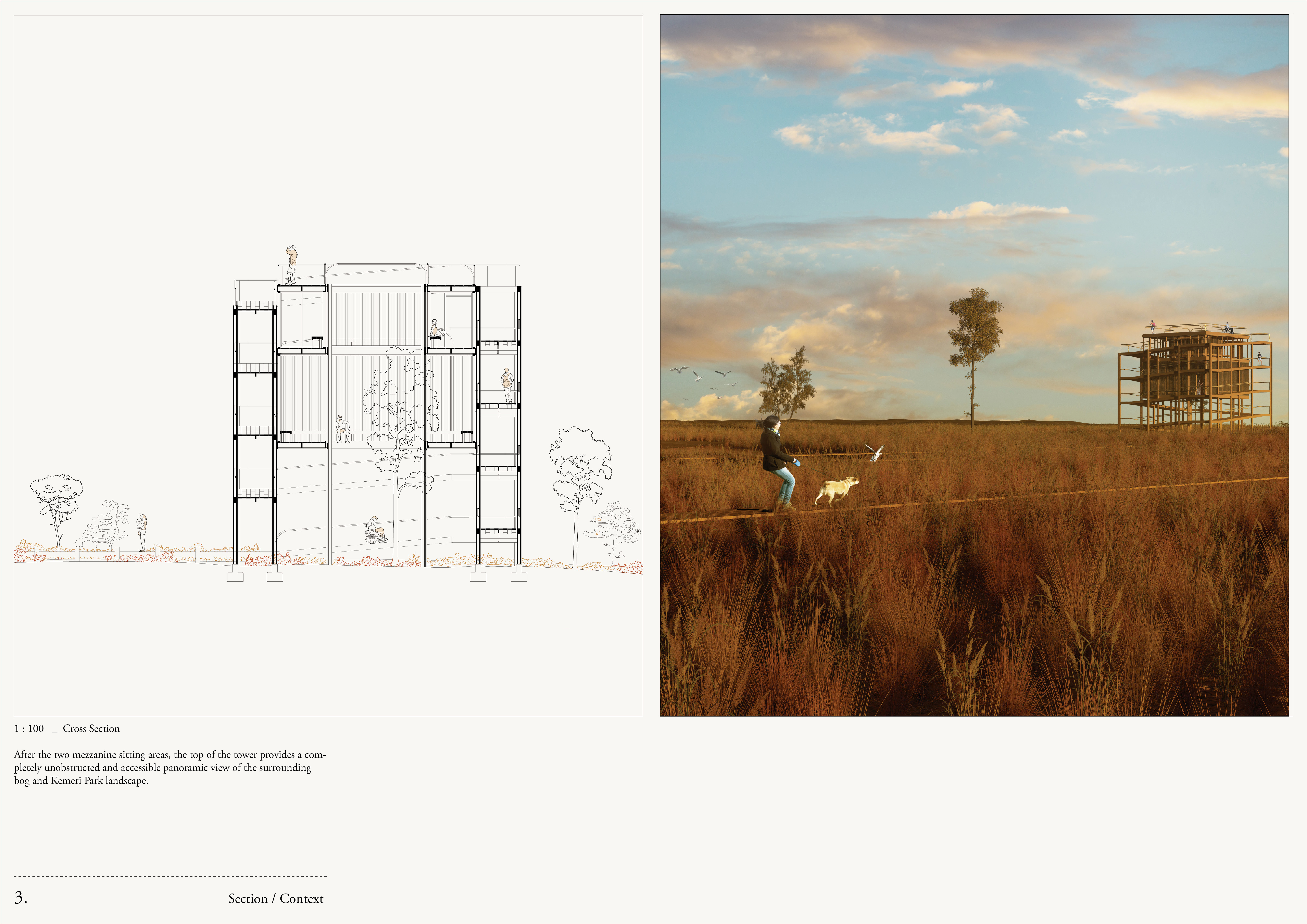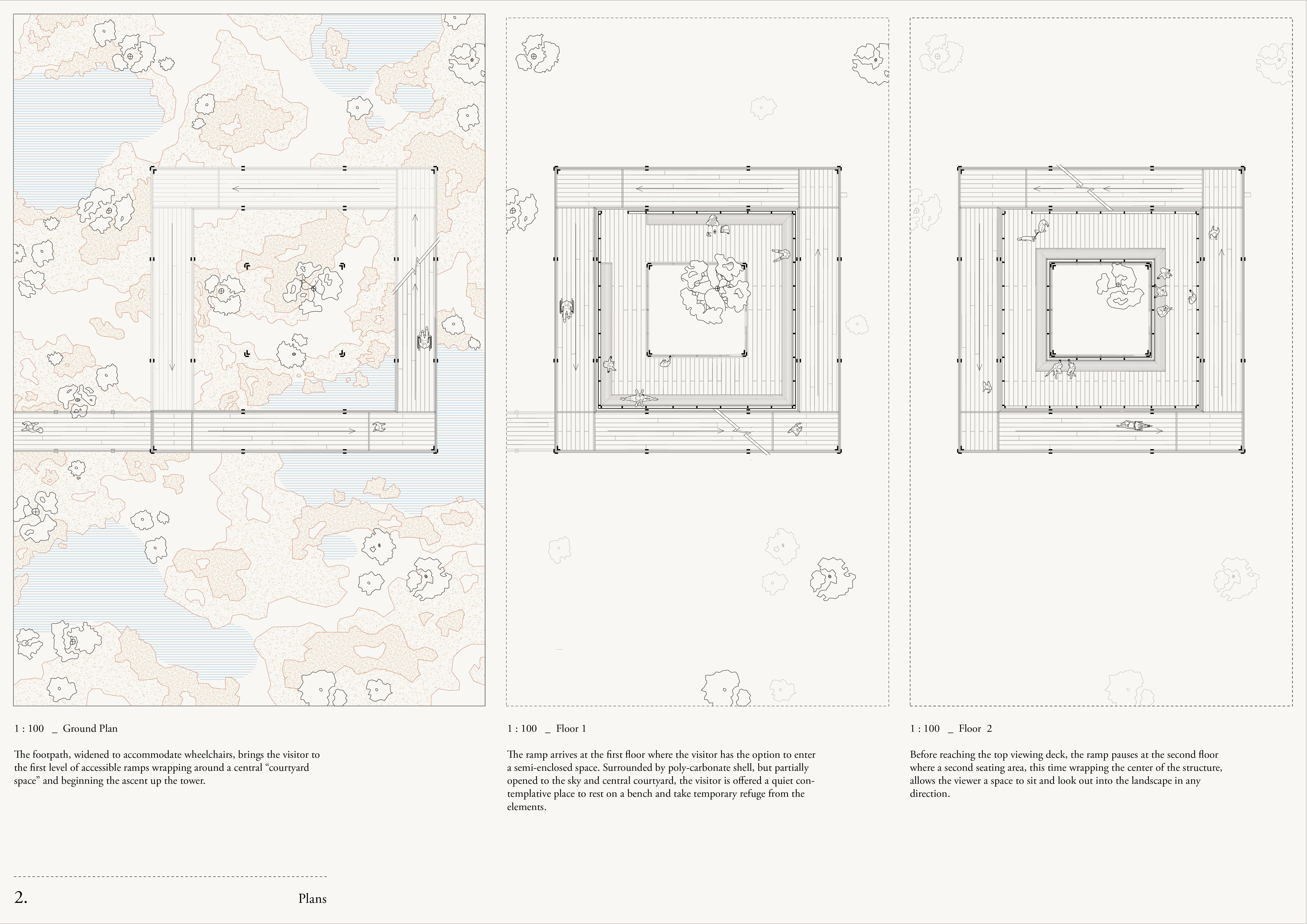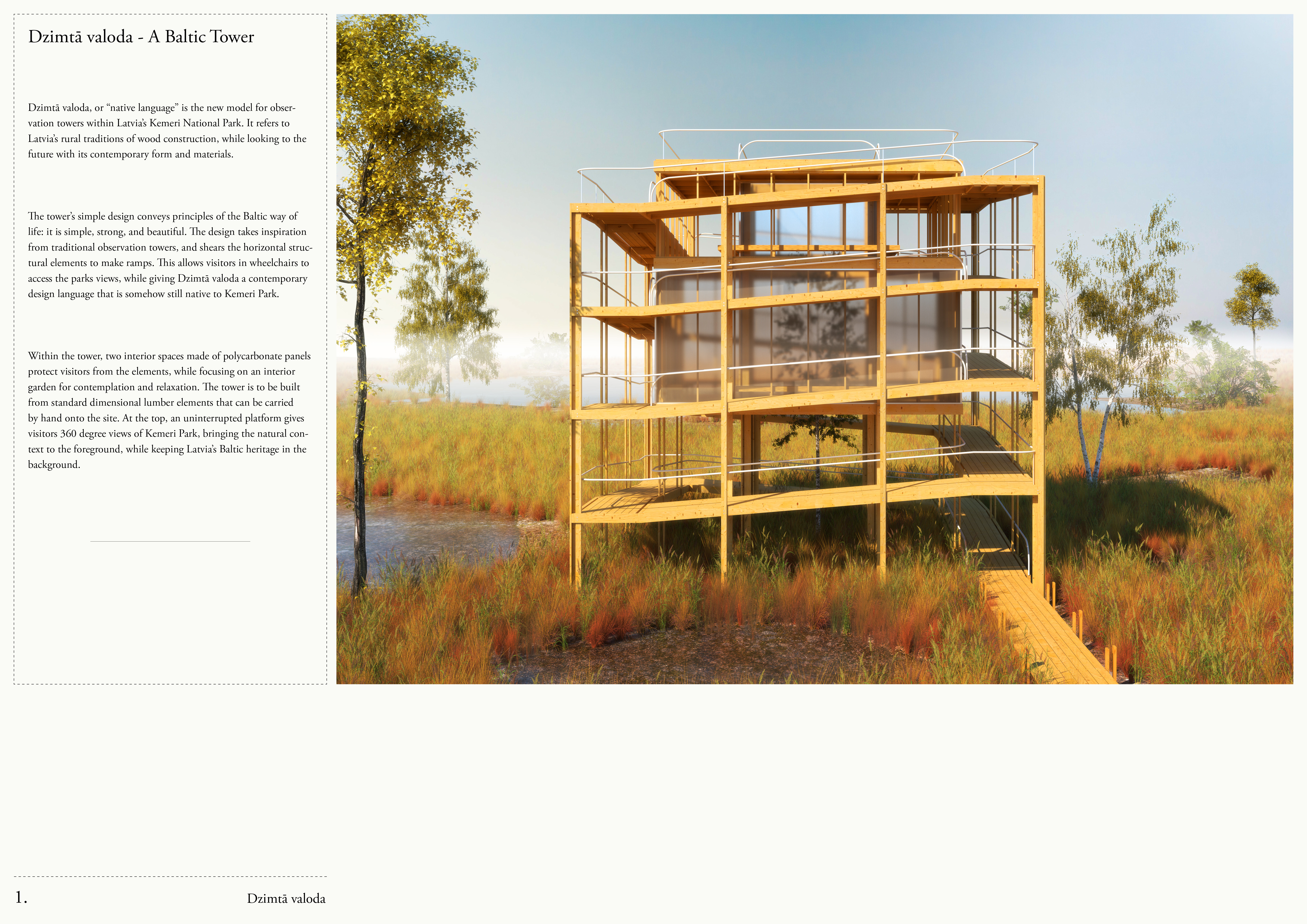5 key facts about this project
**Overview**
The Dzimta valoda observation tower is situated in Kemeri National Park, Latvia, designed to align with the region's cultural heritage while adopting modern construction techniques. This structure serves both as an observation point and a space for reflection, enhancing the natural experience within the park's landscape.
**Spatial Organization**
The design features a tiered arrangement comprising a ground level, two mezzanine levels, and a panoramic viewing deck. A central ramp that encircles the tower ensures accessibility, promoting an inclusive visitor experience while providing seamless transitions between levels. The semi-enclosed areas on the lower floors encourage contemplation and social interaction, with seating that facilitates engagement with the surrounding environment. Large openings and transparent walls are incorporated into the design, allowing natural light to permeate the interior and fostering a connection to the outdoor landscape.
**Materiality and Sustainability**
The construction utilizes a range of materials that emphasize both aesthetic and environmental considerations. A primary structural framework of standard dimensional lumber conveys warmth and sustainability. Polycarbonate panels enclose select areas, offering visual connectivity while protecting against natural elements. The integration of steel railings ensures safety and structural integrity, while composite decking provides durable, low-maintenance flooring that harmonizes with the natural surroundings. This thoughtful approach to material selection not only contributes to the building's visual identity but also reinforces its commitment to sustainability and minimal environmental impact.





















































